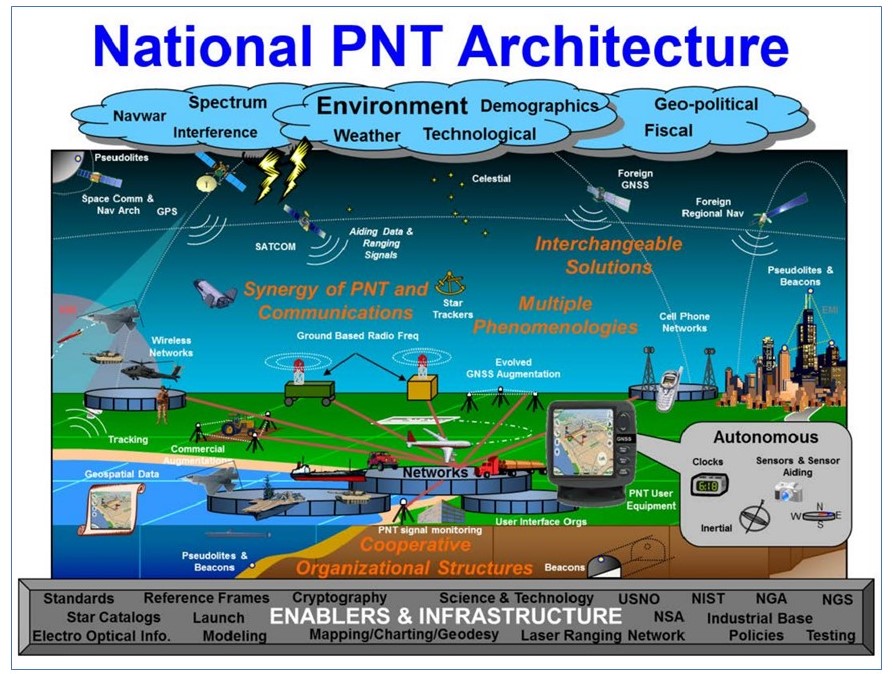Image: National PNT Architecture, 2008, US DoD & DOT
What’s New: Opinion piece about how adoption is as important as systems. It doesn’t matter how many systems are out there if they aren’t used. Seat belts don’t do any good if folks don’t use them.
Why It’s Important: The “adoption issue” has been used as an excuse by some in government for not doing anything to make national PNT more resilient. Yet this ignores the fact that government has at least two big leadership roles.
- There has to be something that people are willing to adopt. Commercial providers have a hard time competing, really can’t compete, with free GPS in many cases. The US government deliberately created wide dependence on highly precise, free, ubiquitous PNT. This eliminated any large market for PNT that might have been created otherwise. So the government will have to be directly involved in establishing one or more widely-adopted complements/backups/alternatives.
- Once there is something to adopt the government has LOTS of ways to encourage folks to adopt a service or technology. Some examples of how that worked with GPS:
-
- Government invested in the system heavily so other users were confident it would be around for the long haul and it would be worth their while going to the trouble and expense of incorporating it into their own enterprises.
- Access to the signal was free.
- Signal specs were made public and everyone was encouraged to make further use of signals.
- Government invested in lots of R&D and sponsored app development by others.
- Government incorporated GPS into all its ships, aircraft, ground vehicles, and other systems.
- User equipment SWAP-C was driven as low as possible through research and quantity.
What Else to Know: The fundamental problem is that within the federal government PNT is not “a thing/” So no one is really in charge. We haven’t had a major failure. “Little Suzie hasn’t died yet.” Leadership has a hard time focusing on preventing a problem when it is in the midst of responding to so many others.



